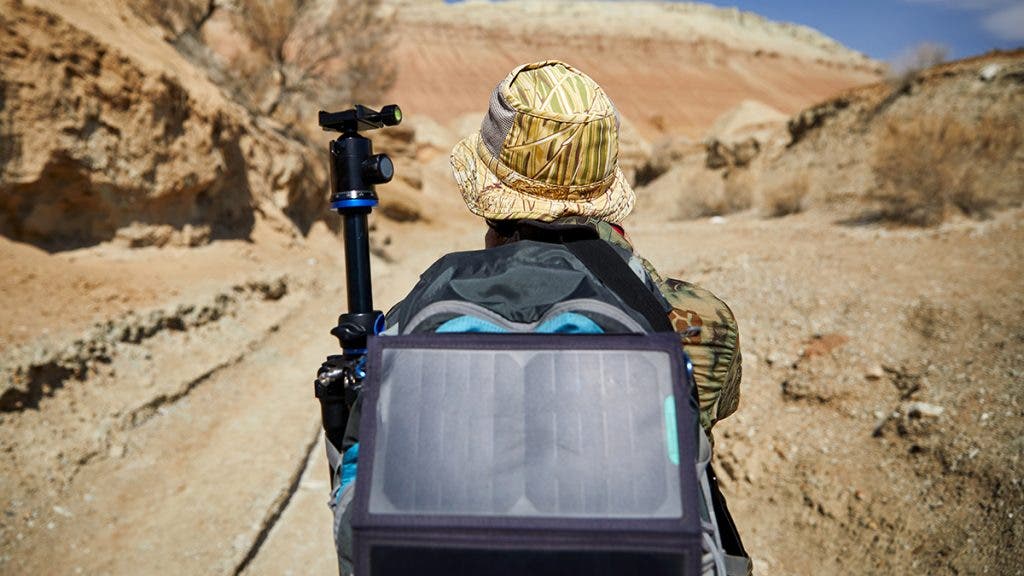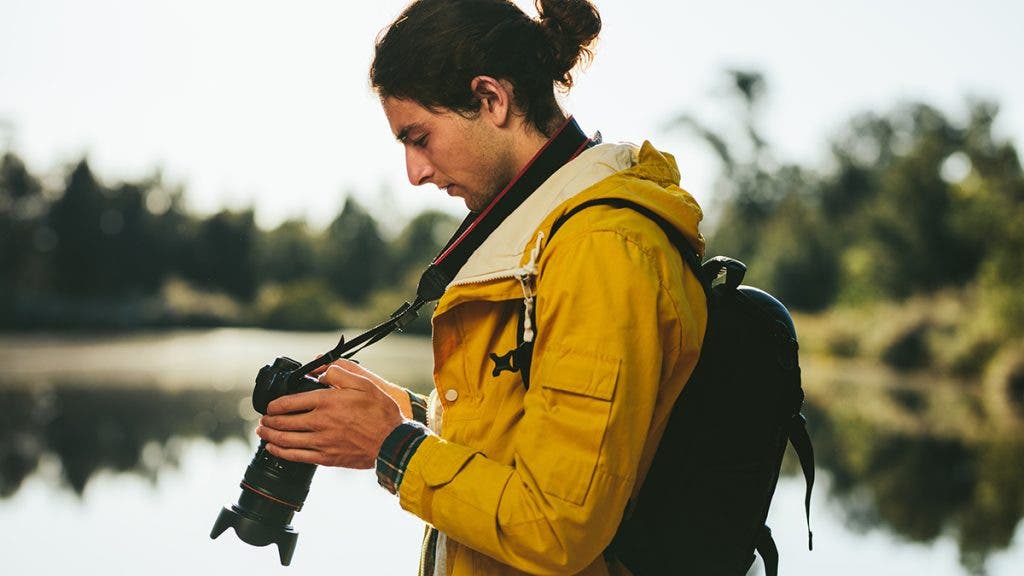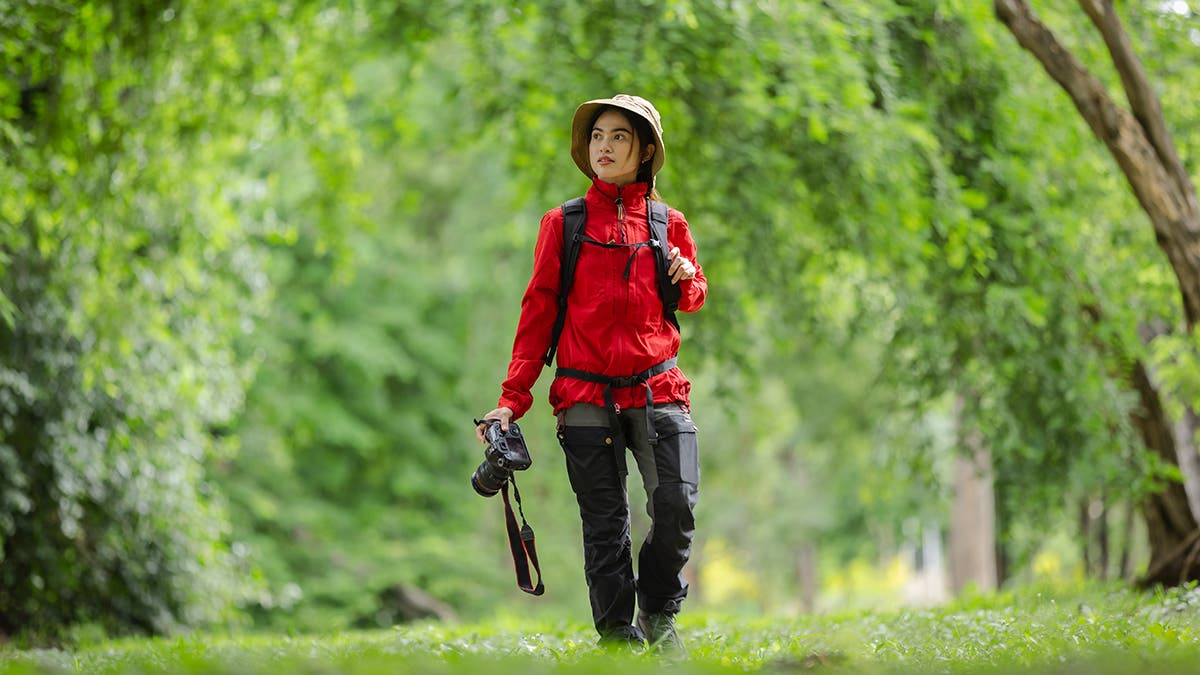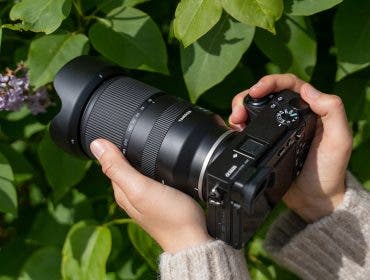Earth Day is coming up, and it’s a moment to reconnect with what matters. As photographers, we don’t just see the world, we preserve it, frame by frame. Sustainable photography isn’t about perfection. It’s about thoughtful changes in how we work, travel, and even acquire gear.
It feels only right to give something back to the planet that inspires us so much.Here’s how to make your photography practice a little greener, one step at a time.
For Sustainable Photography Used Gear Is Good Gear
There’s real value in giving gear a second life, especially when it’s been cared for and is ready to keep on creating. Adorama’s Used Department is full of quality gear from your favorite brands, including gently-used mirrorless cameras to classic lenses that still hold up beautifully for landscape, travel, and street photography.
Buying used not only saves you money but also keeps gear in circulation longer. Better for the earth, and easier on your wallet
And don’t forget, you can also sell or trade in your old gear when you’re ready to upgrade. Instead of letting it sit in the back of your closet, pass it on to another photographer and help extend its life.
2. Consider Renting Instead of Buying as Part of Your Sustainable Photography Plan
We’ve all been there—new gear is exciting, but not everything we buy ends up getting used as much as we thought. Renting instead of buying can be a more thoughtful approach, both for the environment and your budget.
Adorama Rentals has a wide selection of cameras, lenses, lighting, and even drones for those overhead shots. Whether you’re trying out a new system or you’re not ready to commit to a $3,000 lens for one trip, renting helps reduce waste and lets you travel lighter. It’s also a smart way to test gear before committing. No regrets, no dusty shelves.
3. Use Rechargeable Batteries (and Actually Recharge Them)
This one’s easy: ditch single-use batteries. They’re not good for the environment, and honestly, they’re not even convenient anymore. There are great rechargeable AA and AAA options out there, and most camera batteries have solid rechargeable equivalents. Just be sure you’re using a reliable charger and not leaving them plugged in for days (been there, done that, regretted it).

4. Getting Around More Sustainably
Getting around with your camera gear doesn’t always mean hopping in the car. If you’re shooting in the city or heading to a nearby park, consider walking, biking, or taking public transit instead. Subways, buses, and light rails produce far fewer emissions per mile than a private vehicle—and walking has no carbon cost at all.
For longer trips, air travel might be unavoidable. In those cases, consider choosing airlines with carbon offset programs and packing efficiently to lighten your load. Every choice in how we move—from a neighborhood stroll to cross-country travel—can help shrink our footprint.
5. Eco-Friendly Printing Matters
Did you know you can print your photos in a more sustainable way, too? That’s where Printique’s Wood Prints come in. They’re made using Forest Stewardship Council-certified wood, which means it’s sustainably harvested and regulated. The photos are printed directly onto the wood (no glue or extra materials), and the result is durable, heat- and water-resistant, and, honestly, kind of stunning. It’s a beautiful way to turn your photos into long-lasting art without compromising your values.
6. Use Solar Power Where You Can
If you’re planning an extended shoot outdoors or going completely off-grid, consider adding solar charging to your kit. Solar gear helps reduce your reliance on traditional electricity and keeps your batteries and devices powered sustainably.
Three excellent portable solar options include the Anker SOLIX PS100 100W Portable Solar Panel, which folds flat and is compatible with most portable power stations. For faster charging or larger gear setups, consider the UGREEN 200W Foldable Solar Panel. Further, the EcoFlow 220W Bifacial Portable Solar Panel with Kickstand Case features a bifacial design with a 220W primary side and a 155W backside for ambient light, capturing up to 25% more solar energy. These panels help you stay powered in the field while reducing your reliance on traditional electricity, so you can keep doing what you love more sustainably.

7. Choose Brands That Give Back to the Planet
Not every sustainability choice comes from what we personally do—sometimes, it’s about who we support. Choosing gear from brands that are actively working to reduce their own environmental impact is another meaningful way to shrink your carbon footprint. From energy-efficient production to using recycled materials, these companies are helping lower emissions before the product even reaches your hands.
Panasonic
Is a company making significant strides through its GREEN IMPACT initiative, aiming to reduce CO₂ emissions across its operations and product lifecycle. The company has already achieved net-zero CO₂ emissions at 44 of its factories and maintains a factory waste recycling rate of 99.3%. Panasonic is also investing in future technologies like perovskite solar cells and hydrogen fuel cells to further support decarbonization efforts. These actions reflect Panasonic’s commitment to creating a more sustainable future through innovation and responsible manufacturing.
(Source: https://na.panasonic.com/sustainability/initiatives)
Urth
This company was founded with the mission to create a lasting positive impact on the planet. For every product sold, they plant trees through their partnership with Eden Reforestation Projects, contributing to reforestation efforts in countries like Madagascar, Nepal, and Indonesia. This initiative not only helps offset the carbon footprint of their products but also supports communities affected by deforestation by providing employment opportunities.
In addition to tree planting, Urth is committed to sustainable product design. They use low-impact materials and have redesigned their packaging to eliminate plastics, utilizing recycled and recyclable materials instead. Their products, such as the Norite 24L Modular Camera Backpack, are built to last, ensuring longevity and reducing waste.
Lowepro
has taken significant steps toward sustainability with its Green Line initiative. This program focuses on reducing environmental impact by incorporating recycled and solution-dyed fabrics into their products. For instance, the ProTactic BP 450 AW II is constructed with 63% recycled and solution-dyed materials, aiming to minimize water waste and carbon emissions during production. The Green Line score, measured following the GRI 301-2 standard, reflects the percentage of recycled and solution-dyed yarn used compared to the total weight of yarn in each bag. Lowepro’s commitment ensures that photographers can rely on durable, high-performance gear while also supporting environmental responsibility.
(Source: https://www.lowepro.com/us-en/green-line/)
Peak Design
A certified B Corp that takes climate responsibility seriously. They’ve measured and offset their entire carbon footprint, including all historical emissions since the company began. In 2023, they reduced their emissions by over 30% compared to the previous year by cutting back on virgin materials and refining their manufacturing processes. They’ve also prioritized removing PFAS coatings, updated their packaging to be more recyclable by eliminating unnecessary materials, and continue to push for greater transparency in supply chain emissions. Plus, as a co-founder of the Change Climate Project (formerly Climate Neutral), they’re helping set the standard for sustainability across industries.
(Source: https://impact.peakdesign.com/Climate)
Sigma
Also joined the movement through its partnership with Eden Reforestation Projects. In 2023, Sigma UK pledged to plant a tree for every lens sold, directly contributing to global reforestation efforts while supporting local communities impacted by deforestation.
(Source: https://sigmauk.com/sigma-uk-supporting-eden-reforestation-projects-in-2023)

8. And last but certainly not least: Use Your Photos for Meaningful Change
Photography is a powerful tool. It tells stories, stirs emotions, and can spark real action. As a photographer, you’re in a unique position to use your images to raise awareness about the environment and the importance of protecting it.
While it may not reduce emissions directly, using your photos to spotlight environmental issues helps build awareness, and that ripple effect can lead to real-world impact.
Consider creating photo essays or social media posts that highlight environmental issues, disappearing habitats, or the beauty of places worth preserving. You can partner with local conservation groups or nonprofits and donate images for their campaigns. Even a single photo shared with the right context can inspire someone to think differently about the natural world.
Your work already captures what’s beautiful. Use it to show what’s at stake and what’s still possible.
You don’t need to make huge changes all at once to make a real difference. If you care about capturing the beauty of the world, then it’s worth doing what you can to help keep it beautiful.
Earth Day is a good time to pause and remember what we love about this planet. The colors, the light, the stories we find in wild places—it’s all worth protecting.
We’ve all got a part to play. Let’s keep doing what we love, and doing it with care.
Happy Earth Day!






